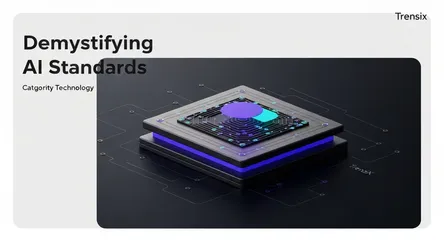Technology
Demystifying AI Standards

Discover the crucial role of AI standards in ensuring safety, fairness, and interoperability. Learn why developing global rules for AI is essential.
What is it?
AI standards are a set of formal guidelines, technical specifications, and best practices designed to govern the development and deployment of artificial intelligence. These frameworks cover crucial areas such as safety, security, data privacy, fairness, transparency, and interoperability. They provide a common language and benchmark for developers, regulators, and users to ensure AI systems are reliable, ethical, and perform as expected.
Why is it trending?
As AI technology becomes more powerful and integrated into society, the need for a robust governance structure is urgent. Concerns about algorithmic bias, misinformation, and the potential for autonomous systems to cause harm are driving a global push for standardization. Governments and international organizations like ISO and NIST are actively developing these frameworks to mitigate risks, build public trust, and foster responsible innovation. This race to establish rules is critical for preventing a fragmented, unregulated AI landscape.
How does it affect people?
For the average person, AI standards are a safety net. They ensure that AI systems used in critical areas like healthcare, finance, and employment are fair, accountable, and protect personal data. Standards can mandate transparency, allowing individuals to understand how an AI made a decision affecting them. For businesses, they create a level playing field, streamline development, and boost consumer confidence. Ultimately, these rules aim to harness AI's benefits while safeguarding fundamental human rights and societal values.